The making of an Irish nuncio
Published in 20th-century / Contemporary History, Features, Issue 2 (March/April 2019), Volume 27The early career of Paschal Robinson OFM, the first papal nuncio to the Irish Free State, 1929–48.
By Thomas J. Morrissey SJ
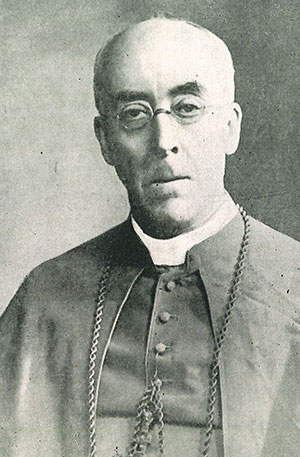
Charles Robinson, the future papal nuncio to the Irish Free State, was born on 26 April 1870 at 49 Percy Place, then a row of fairly new houses along the Grand Canal. When he was six years of age his family left for the United States. He received his education in America and opted to follow a career in journalism.
In 1889 he was the American press correspondent at the Parnell/Piggot forgery trial. Two years later he became associate editor of the North American Review, described by Kees Van Hoek in the Irish Weekly Independent as ‘the most famous monthly of the nineties’. ‘People who have known him at that time’, Van Hoek observed, ‘recollect him as a serious, modest, and vastly erudite man, looking much older than his twenties, a walking encyclopaedia yet an affable companion’, a man ‘of refinement and culture’. On 2 August 1896, to the surprise of many, Robinson entered the Franciscan Order at St Bonaventure’s College, Allegany, New York. He was given a name in religion after St Paschal Baylon. Henceforth he was known as Paschal Robinson.
After his theological studies and ordination as priest in Rome in 1901, he returned to the United States and lectured in theology to Franciscan students in Washington. He developed an interest in the history of the order. There was much interest in the life of St Francis of Assisi. In 1903 Robinson wrote The real St Francis, which was well received and was considered a major contribution to Franciscan studies. He wrote a number of other works on Franciscan history, including The writings of St Francis, which the London Saturday Review termed the best work in English yet written on the saint.
From 1904 to 1913 Robinson served as a member of the Institute of Franciscan Research in Quaracchi, near Florence. In 1913 the Catholic University of America invited him to join the faculty as professor of medieval history. The following year he was elected fellow of the Royal Historical Society of England, an honour then shared by very few Catholics. Robinson continued at the Catholic University until 1919, when his career took another major turn.
Diplomat
That year the United States government nominated Professor Robinson to its economic and educational mission to the peace conference at Versailles. Robinson’s nomination facilitated his appointment by the Holy See to accompany Archbishop Cerretti to France to look after Vatican interests at the peace conference. In Paris, Cerretti and Robinson found themselves among a medley of representatives of small nations seeking political recognition, based on President Wilson’s rhetoric about the rights of small nations.
After Versailles, Robinson, in 1920, was sent as apostolic visitor to Palestine, which had been entrusted as a mandate to Britain by the League of Nations. The Vatican and the Franciscan Order insisted that his role in 1920 was as Apostolic Visitor to the Franciscan custody of certain sacred places in Palestine. Nevertheless, there were wider issues involved. The Vatican was concerned about the activity of British evangelical groups in Palestine, and also about the volatile political state of the country. Three years earlier the British government, under Foreign Secretary A.J. Balfour, had promised the Jews ‘a national home’ in Palestine. Muslims and Christians had supported Britain in the war against the Turks but now that support evaporated. They distrusted the British mandate because ‘a self-constituted Zionist community’ had settled in Jerusalem, had interfered with the administration and displayed ‘an arrogance extraordinarily impolitic from the point of view of public interest’. Muslems and Christians came together in protest. Public demonstrations and riots took place. There was little Robinson could do except carefully study the situation and prepare reports on the Franciscan area of interest and on the potentially explosive situation in Jerusalem. His reports were favourably received and in 1922 he was despatched on a different kind of delicate mission—this time to San Giovanni Rotondo, in Italy.
Investigating Padre Pio
Huge crowds gathered at San Giovanni to see the 31-year-old Capuchin Padre Pio. It was said that he had received the stigmata in 1918, and there were reports of cures and miracles linked to him and talk of bilocation. The Church authorities viewed the whole situation with scepticism. Fraud was suspected. Perhaps the stigmata were fraudulent, caused by the use of chemicals. There was concern that the local mafia might be involved, availing of the great crowds to make money. Eventually, following the election of the vigorous Pope Pius XI, Dr Paschal Robinson was instructed to examine the situation.
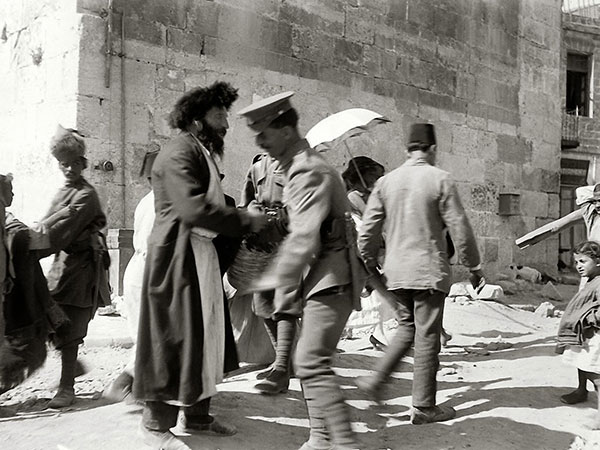
He visited Padre Pio and soon established that the friar’s wounds were genuine, the bleeding from them authentic. He noted that the Capuchin covered the wounds and seemed embarrassed by them, and that the publicity surrounding them was not sought by him. Robinson recommended that the entire matter be played down and that Padre Pio not appear in public as long as the stigmata were present. In 1923 the Holy Office stated carefully that there were not grounds for deeming Padre Pio’s wounds supernatural in origin and urged Catholics not to visit San Giovanni.
Maltese mission
Robinson’s standing in Rome continued to rise. By 1925 Pius XI had named him a consultor of three of the Church’s sacred congregations. In 1927 he made him titular archbishop of Tyana, a location in Asia Minor. Two years later a major responsibility was entrusted to Robinson when the British government, on behalf of the government in Malta, requested the Vatican to appoint an apostolic visitor to investigate differences between the Maltese government and the ecclesiastical authorities of the island. It proved a testing ground for his subsequent appointment to Ireland.
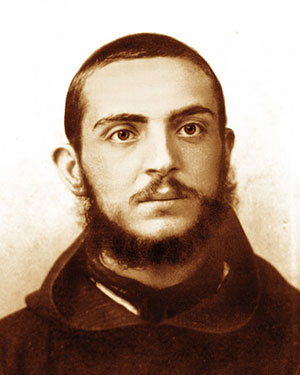
Malta in 1921 was divided between two governments: the Maltese imperial government, which was represented by the governor of the island, who reported directly to London, and the local Maltese government, which was headed by an executive council responsible to a popularly elected legislative assembly of 32 members and a senate of seventeen members elected mainly from corporate bodies such as the Church and the trade unions. English was the official language of the administration but Italian was the official language of legal record and culture. Two major political blocs crystallised around preference for English or Italian: the Constitutional Party, led by Sir Gerald Strickland (later Lord Strickland), fervently pro-English and pro-British, and the Nationalist Party, committed to the Italian language and culture.
In 1927 the Constitutional Party came to power and Strickland was elected prime minister. He pronounced the language question the source of all Malta’s problems. A ‘foreign language’, Italian, was set up ‘as equal to English in the administration generally and as paramount in the courts of law’. The reluctance of the bishops of Malta and the island of Gozo to take a stand against the participation of clergy in politics and the Vatican’s silence were publicly criticised by Strickland. The Constitutionalist newspapers fanned anti-clerical feeling and encouraged hostile public demonstrations. This led the formidable bishop of Malta, Maurus Caruana, to condemn such anti-clericalism in August 1928.
Under parliamentary privilege, Strickland made adverse statements about individual Catholic clergy, about bishops and about the Vatican. The prelates of Malta and Gozo responded by issuing a pastoral letter protesting at such interference in ecclesiastical affairs and criticising Strickland, his party and those who might support him in the forthcoming general election in 1930. In May 1930 the government took the serious step of suspending the election. The Nationalist Party protested, claiming that they were ahead in the polls. Following this, the suppression of the opposition press and the suspension of the constitution by the British government, it was decided in 1931 to set up a royal commission to investigate the political situation in Malta.
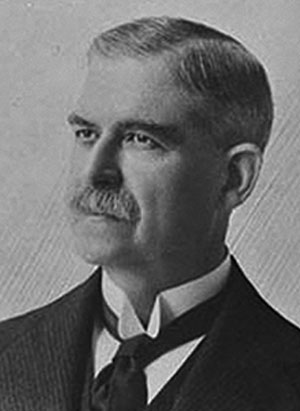
Already in 1929 Strickland, through the British government, had requested the Holy See to send a representative to Malta to investigate and report on the differences between the Maltese government and the ecclesiastical authorities of the islands. The Vatican responded by sending Archbishop Robinson. He interviewed the main contenders and numerous other people before writing his report. He did not mince his words. He judged that Lord Strickland wished ‘at all costs to make the Church subservient to the State … [showing] no regard whatever for the law, nor for the rights and feelings of the clergy and of the Catholic population’. He added trenchantly that ‘reliable witnesses do not hesitate to declare that Malta is at present subject to a regime of terror and despotism, in which the opposition in parliament is disarmed and its press gagged, the courts threatened, justice suspended, the Constitution in danger, the country in a ferment, the Church and religion openly insulted and opposed’. ‘The same witnesses’, Robinson continued, ‘point out that although Lord Strickland claims to be the champion of imperial British prestige, in reality he is acting in contradiction of the best traditions of the Empire and is damaging to its real interests.’
The royal commission’s report found Lord Strickland to be ‘a dominating and aggressive force with a manner calculated to cause interference and annoyance’, thereby going contrary to the imperial government’s claim that the chief cause of the trouble was the interference of the clergy in politics. The commission acknowledged the good offices of Archbishop Robinson as a potent factor in restoring harmony in Malta, and recommended that self-government be restored and that early elections be held. In the general election of 1932 the Nationalist Party won a decisive victory. Robinson’s report helped determine his appointment to Ireland.
First papal nuncio to Ireland since Rinucinni
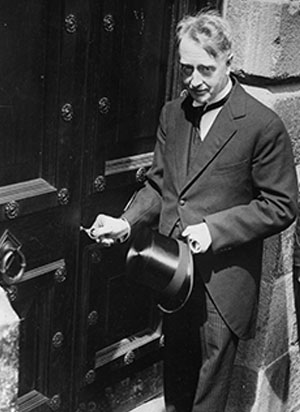
The Irish government had decided to seek the appointment of a papal nuncio to Ireland, as this would manifest important political recognition of the new Irish state. At first the government favoured an Italian for the position, but the papal secretary of state, Cardinal Pietro Gaspari, announced that the nuncio would be ‘Mgr Robinson, a very holy man, who will not interfere in any way with politics’. The Irish envoy to the Vatican, Charles Bewley, informed Dublin that Robinson had a high standing in Rome as consultor to four general congregations and, significantly, that his recent report on the Maltese question would prove to all classes of opinion in Ireland that he was not likely to be over-subject to English influence. This was in November 1929. Robinson arrived in Ireland in January 1930 to a tumultuous welcome. He was the first papal nuncio to Ireland since Archbishop Rinuccini in the seventeeth century.
He brought to his role the experience and skills honed in his years in the diplomatic service, together with a quiet, friendly and unobtrusive manner. He went out of his way to allay the bishops’ fears that he would be encroaching on their independence, he invited members of government and opposition to visit him at his residence in the Phoenix Park and was noted for keeping a good table. He became friendly with Mr Cosgrave and his family—so much so, indeed, that Cosgrave would leave his two sons at the nunciature while he went to the horse-races at the Phoenix Park. Despite that, the nuncio retained his independence. When the Cosgrave government condemned the IRA as being in league with communism and hoped that the nuncio would reinforce the situation, he quietly made no response but had Seán MacBride, a noted IRA figure, to lunch at the nunciature. With de Valera’s party entering government, there were fears in Rome that these men would, once in power, be anti-clerical, as had happened in Spain. The Vatican feared for the Eucharistic Congress. Robinson again allayed fears and ensured that the Eucharistic Congress proceeded as planned. During the so-called ‘Economic War’, when a number of bishops came out publicly against de Valera and his government, Robinson had a calming influence on both parties and on the authorities in Rome. He was never as close to de Valera as he had been to Cosgrave, yet when de Valera was drawing up the Constitution in 1937 he personally consulted Robinson on ten occasions. During the Second World War Robinson and his diplomatic bag provided a link with Rome and Europe, and he facilitated de Valera’s historic speech through Vatican Radio in which, on behalf of hundreds of millions of Christians, he successfully appealed to the Allied powers and the Germans to spare the city of Rome.
Not surprisingly, when Paschal Robinson died in 1948, after some years of poor health, the houses of the Oireachtas sent an official letter to the pope assuring him ‘of the deep respect and affection in which the saintly character of the late Nuncio, his great intellectual attainment and his deep knowledge of and understanding of this country and of its people caused him to be held amongst us’. For many years he remained the measuring rod of nuncios to Ireland.
Thomas J. Morrissey SJ is the author of The life and times of Archbishop Murray: esteemed archbishop of Dublin 1823–1852 (Messenger Publications, 2018).
FURTHER READING
C. Cassar, A concise history of Malta (Throwbridge, 2000).
D. Keogh, Ireland and the Vatican, 1922–1960 (Cork, 1995).
M. Manning, The Kilderry Files (Dublin, 2017).
















